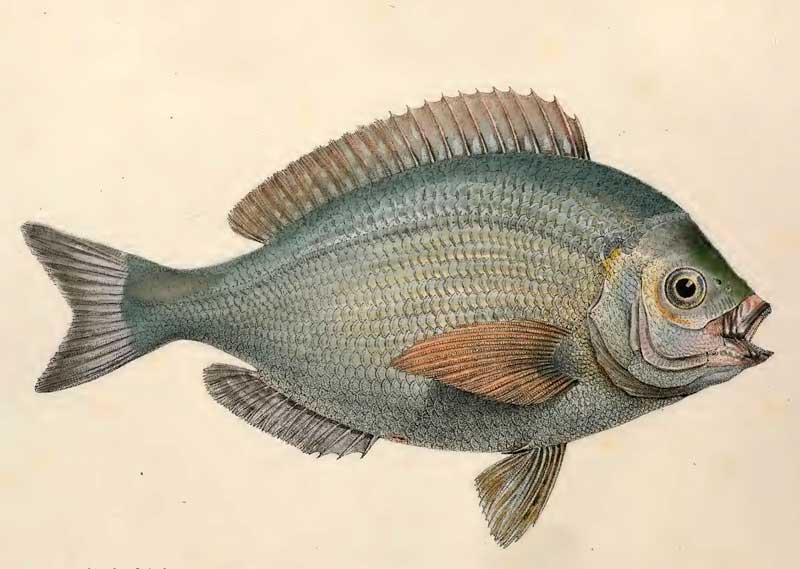
Superregnum: Eukaryota
Cladus: Unikonta
Cladus: Opisthokonta
Cladus: Holozoa
Regnum: Animalia
Subregnum: Eumetazoa
Cladus: Bilateria
Cladus: Nephrozoa
Superphylum: Deuterostomia
Phylum: Chordata
Subphylum: Vertebrata
Infraphylum: Gnathostomata
Megaclassis: Osteichthyes
Superclassis/Classis: Actinopterygii
Classis/Subclassis: Actinopteri
Subclassis/Infraclassis: Neopterygii
Infraclassis: Teleostei
Megacohors: Osteoglossocephalai
Supercohors: Clupeocephala
Cohors: Euteleosteomorpha
Subcohors: Neoteleostei
Infracohors: Eurypterygia
Sectio: Ctenosquamata
Subsectio: Acanthomorphata
Divisio/Superordo: Acanthopterygii
Subdivisio: Percomorphaceae
Series: Eupercaria
Ordo: Spariformes
Familia: Sparidae
Genus: Spondyliosoma
Species: Spondyliosoma cantharus
Name
Spondyliosoma cantharus (Linnaeus, 1758)
Original combination: Sparus cantharus
References
Linnaeus, C. 1758. Systema Naturae per regna tria naturæ, secundum classes, ordines, genera, species, cum characteribus, differentiis, synonymis, locis, Tomus I. Editio decima, reformata. Holmiæ: impensis direct. Laurentii Salvii. i–ii, 1–824 pp DOI: 10.5962/bhl.title.542: 280. Reference page.
Spondyliosoma cantharus in the World Register of Marine Species
Vernacular names
brezhoneg: Glazenn
català: Càntera
Deutsch: Streifenbrasse
Ελληνικά: Σκαθάρι
English: Black seabream
español: Chopa
euskara: Txopa
français: Dorade grise
galego: Chepa
hrvatski: Kantar
italiano: Tanuta, Cantaro
lietuvių: Juodosios jūros kantaras
Nederlands: Zeekarper
polski: Kantar
русский: Кантар
srpskohrvatski / српскохрватски: Kantar
slovenščina: Kantar
svenska: Havsruda
Türkçe: Sarıgöz
Wolof: Wersun
中文: 黑椎鯛
The black seabream (Spondyliosoma cantharus) is a species of Sparidae fishes. They are recognisable by their oval compressed body and jaws containing 4-6 rows of slender teeth which are larger at the front. They are silvery in colour with blue and pink tinges and broken longitudinal gold lines. They can reach a maximum size of 60 cm in length. They live in northern Europe and in the Mediterranean, usually found on the inshore shelf at depths varying from 5 to 300 m. They are usually found in schools feeding on seaweeds and invertebrates. They breed in February to May leaving eggs in the demersal zone.
Black seabream are protogynous meaning females have the ability to change to males.
References
Russell, B.; Pollard, D.; Carpenter, K.E. (2014). "Spondyliosoma cantharus". IUCN Red List of Threatened Species. 2014: e.T170258A1303321. doi:10.2305/IUCN.UK.2014-3.RLTS.T170258A1303321.en. Retrieved 11 November 2021.
Retrieved from "http://en.wikipedia.org/"
All text is available under the terms of the GNU Free Documentation License

